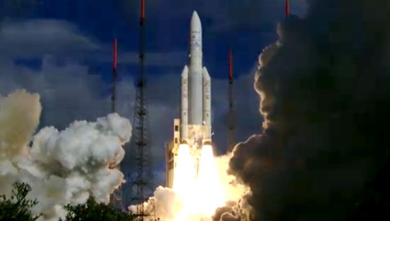On July 25, 2013 Alphasat I-XL was successfully lifted off on an Ariane 5 launcher from Europe's Spaceport in French Guiana with a modified LCT which will be used to test data transfer between geostationary and low Earth orbits. The Alphasat I-XL is the largest European Space Agency (ESA) telecommunications satellite to date, created with the aim of revolutionising broadband communication over the next 15 years by perfecting the application of laser transfer systems.
Ever growing volumes of data are constantly being transported around the world in a process in which telecommunications satellites play a leading role. So far, data transfers between satellites and Earth has mainly be done by using higher radio frequencies; but this method present limitations that can be avoided by switching to much higher frequency laser light. The optical Laser Communication Terminal (LCT) was developed under the leadership of the German company Tesat, under contract to DLR, and tested on satellites for a number of years.
"The development of the LCT was supported by the DLR Space Administration", according to a press release, "through the German Aerospace Center (Deutsches Zentrum für Luft- und Raumfahrt; DLR) Space Administration, Germany is the second largest contributor to the Alphasat development programme". Moreover, the satellite is a Public-Private Partnership (PPP) between ESA and Inmarsat, a global operating company for mobile satellite communication services.

